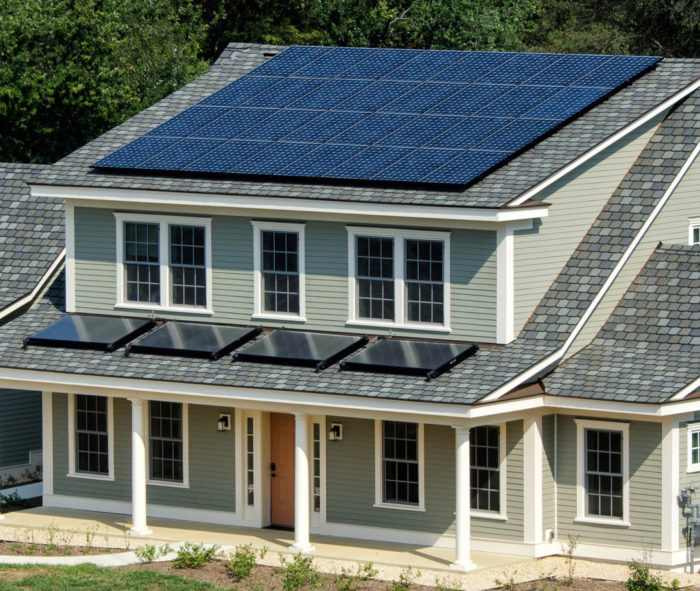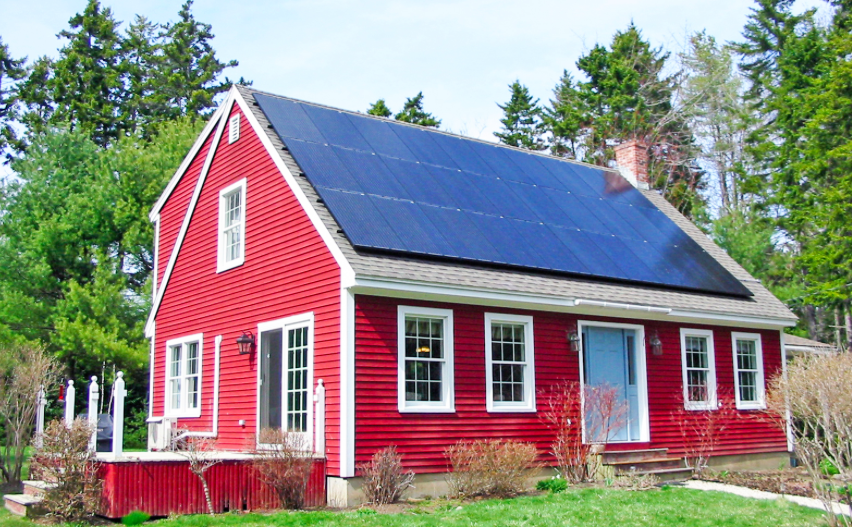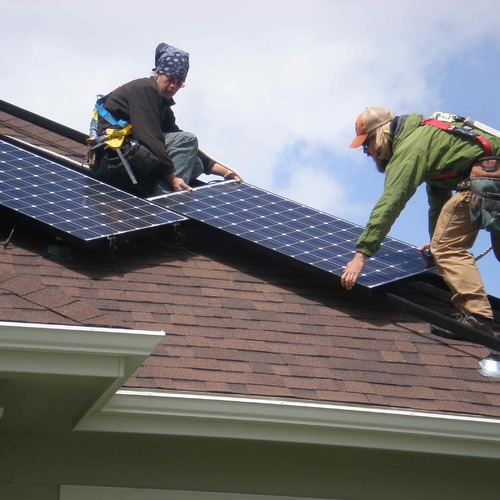
Image Credit: NIST
Installers typically orient solar panels so they face south. But west-facing solar arrays would be more effective at reducing the strain on electric utilities on hot summer afternoons, Texas-based researchers said.
A report from the Pecan Street Research Institute headquartered at the University of Texas at Austin, focused on a small sample of houses in Austin, 24 of them with south-facing photovoltaic panels, 14 with west-facing panels and another 14 with arrays that faced both west and south.
Researchers were surprised to find that west-facing panels produced more power than south-facing panels during the study period, June 1 to Aug. 31, 2013. “During summer peak demand hours (3-7 pm), the gap was even more pronounced: west-facing systems produced 49% more electricity during those hours than did south-facing systems,” the Institute said in a news release.
West-facing solar panels reduced the peak electricity demand from the grid during those hours by 65% while south-facing panels reduced peak demand by 54%, according to the report.
“These findings suggest that rooftop solar systems can produce large summer peak reductions that benefit utilities and customers alike without requiring customers to change their behaviors or sacrifice comfort,” lead author and Pecan Street CEO Brewster McCracken said.
But overall, south-facing panels make more power
Before you get up on your roof and start moving panels around, remember that south-facing solar arrays make more power overall.
Writing at Forbes, Tom Konrad took other bloggers to task for misinterpreting the study and implying, inaccurately, that west-facing panels will out perform south-facing panels all year round.
“The study (which I obtained from Pecan Street) specifically says, ‘Over the course of a full year, a south-facing orientation produces more total energy than other orientations,’” he wrote. “In addition, Brewster McCracken, the president and CEO of Pecan Street, told me that he did not expect that the finding that the west-facing arrays produced more energy even during that three-month period was statistically significant, given the small sample size.”
More arrays should be pointed west, Konrad said, not because they generate more electricity but because “the power they produce is more valuable.”
Some Austin-area utilities, McCracken told Konrad, don’t offer incentives for west-facing solar panels on the grounds they don’t produce enough energy.
“Those utilities are just as confused as the media lemmings who think you get more energy by pointing solar panels west,” Konrad writes.
The report suggests utilities should not only extend solar rebates for west-facing systems but “even offer higher rebate levels than is provided to south-facing systems.”
Weekly Newsletter
Get building science and energy efficiency advice, plus special offers, in your inbox.














8 Comments
Brewster McCracken, the president and CEO of Pecan Street,
that would be a great pro baseball name.
So west is OK...
When my house is built, the garage will be in back (south side) of the house, with the gable end pointed due south and the roofs sloping straight east and west. (Don't ask: that's the way it had to be.) Before reading this article I assumed that solar panels wouldn't make much sense. Now it seems that west-facing might actually work, though it probably won't do much in winter. Is there any point in putting them on the east-sloping wall?
Adjustable Panels
Ideally one would want panels that are ground mounted and would be adjustable so that they can be repositioned during summer solstice and winter solstice to take full advantage of the suns angle. This of course cannot be accomplished on a small lot and requires one to have a larger lot. I will do a ground mounted 10 kWh panel system that will be adjustable but I have a few acres of room to play with.
Response to Gordon Taylor
Gordon,
East-facing PV arrays, south-facing PV arrays, and west-facing PV arrays all produce electricity. South-facing arrays produce the most on an annual basis.
If you are willing to accept the reduced annual output, an east-facing or west-facing array may make sense. To find out how different array orientations affect annual electrical output, you can use an online tool called PVwatts. The default setting for "array azimuth" (the direction that the panels face) is south, but you can choose a different orientation if you want, to see the effect on annual production.
Response to Peter L
Peter,
As I'm sure you know, it's possible to change the angle of a south-facing array from nearly horizontal in summer to nearly vertical in winter to maximize output. This can be done manually or automatically (with a tracker).
If you want your array to follow the sun from east to west each day, the only way to do it is with a tracker.
Thanks Martin. For what it's worth, per PVWatts,
in Salem, Oregon, at latitude 45, the AC energy output per annum of a 4kW system is:
oriented due south (180 az.) @ 44.9 deg tilt--------------------4309 kwh/yr;
oriented due west (270 az.) @ 22.6 deg (5/12 pitch roof) --3777kwh/yr.
A difference, yes. But not, I think, a catastrophic difference. And during the summer months, the west orientation on a 5/12 pitch roof keeps up very well with due south.
Response to Martin
Martin,
On roof mounted systems, can one still change the angle of the panels? I know it's possible on grade mounted systems but roof mounted (especially 2-story homes) would be difficult if not dangerous. Climbing on a roof with solar panels is not fun ;)
Response to Peter L
Peter,
I agree with you.
At my own house, I change the angle of my panels seasonally (in spring and fall), and you're right -- it's not fun. I have a permanent pressure-treated wooden catwalk on my roof, like a widow's walk, that is accessed via a roof hatch. I don't recommend this for most homeowners, and when I get older, I will probably stop the practice.
Log in or create an account to post a comment.
Sign up Log in